When Pure Earth visited Maragogipinho, a village in the town of Aratuípe in Brazil, in 2017 as part of the Toxic Sites Identification Program (TSIP), the team found lead concentrations in the soil as high as 44,500 ppm (the EPA level for concern is 400 ppm for residential soil).
Such a high concentration means big health risks for the village’s more than 3000 residents, particularly the children. A pilot survey by a team from the Laboratory of Toxicology (LabTox) of the Federal University of Bahia had found that men in the village had an average blood lead level of around 20 µg/dL, with some individuals measuring as high as 71 µg/dL, while women had an average blood lead level of around 8 µg/dL. (While there is no safe level for lead in blood, the US EPA lists 5 µg/dL as the level of concern.)
Unfortunately, the source of lead contamination is also the source of the community’s economic and cultural richness: artisanal pottery.
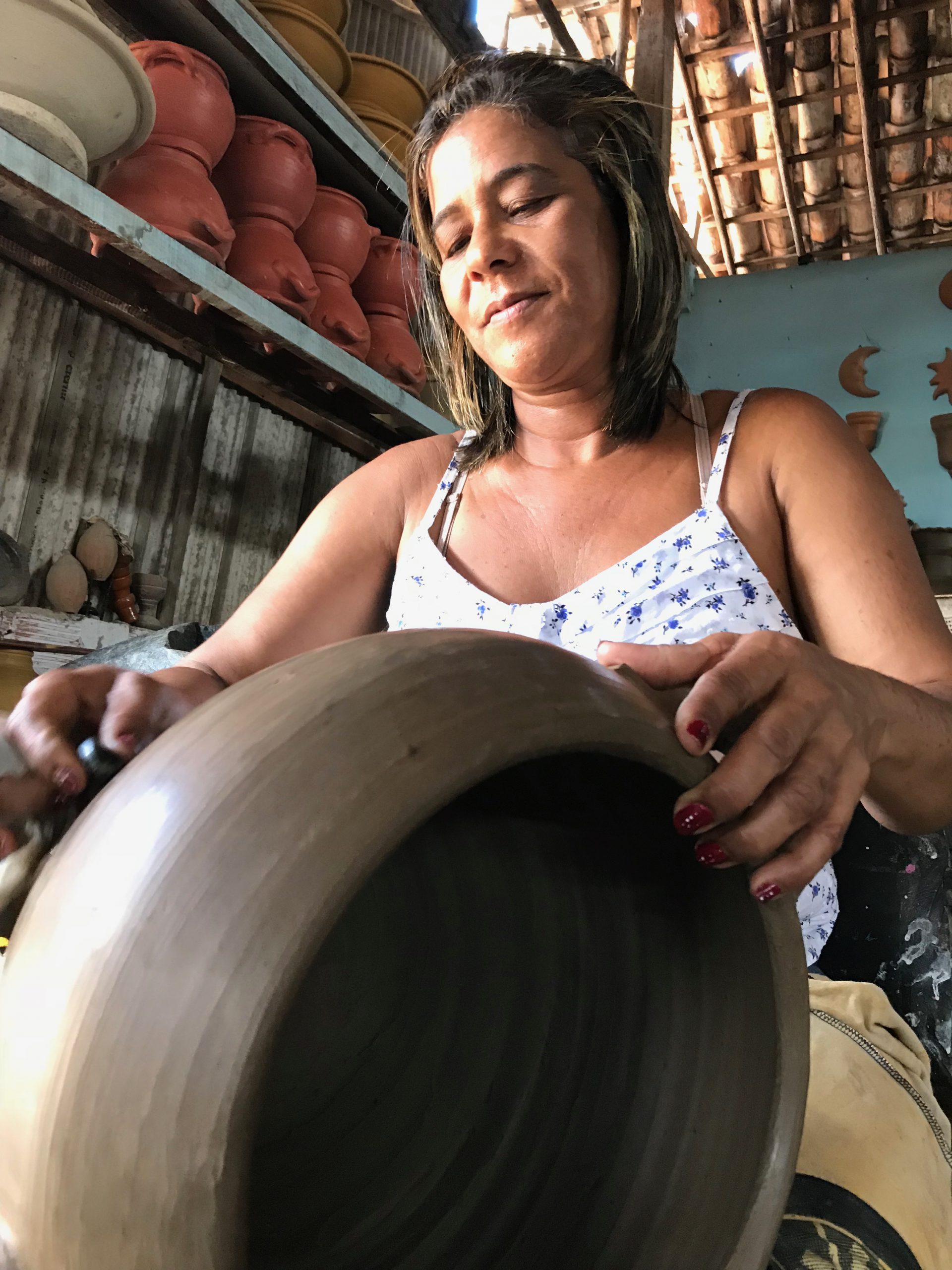
There are over 100 ceramic workshops in Maragogipinho and about 80% of the community is employed in these workshops.
The problem stems from the use of a lead-based glaze, meaning that anyone who handles the pottery, from the artisans to their families and customers, may be poisoned. For example, the popular Brazilian dish moqueca is commonly cooked and served in these traditional lead-glazed pottery. Consuming the dish usually also means ingesting lead.
Maragogipinho’s lead-glazed wares are sold in stores locally and also exported to other municipalities in the State of Bahia and to other regions in Brazil.
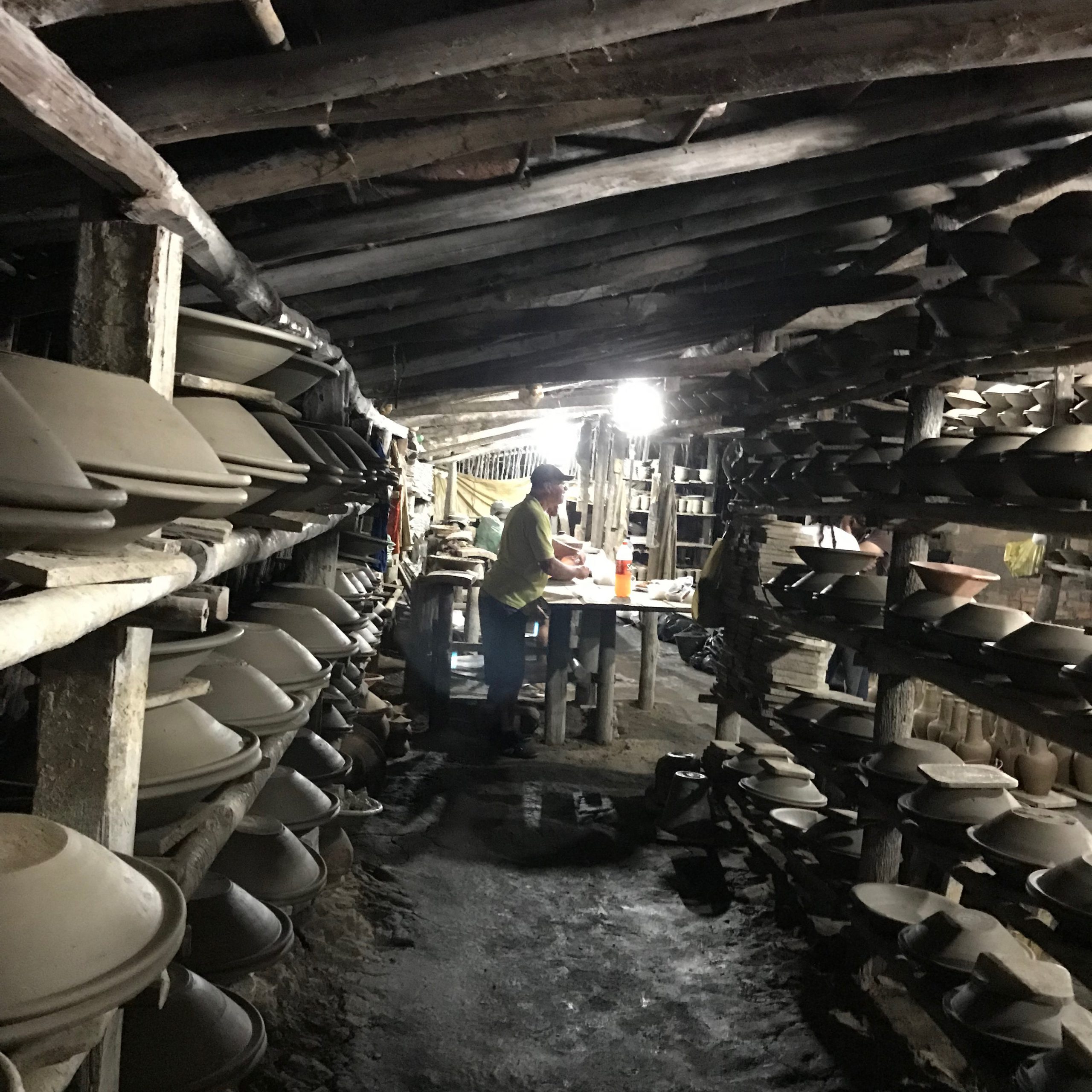 Local artisan Nivaldo Dos Santos hosted a lead-free pottery workshop in his studio.
Local artisan Nivaldo Dos Santos hosted a lead-free pottery workshop in his studio.
Toxic Livelihood Bonds Two Countries
Maragogipinho is not alone.
Up to 20% of Mexicans are poisoned by the pottery they use for daily meals at home and in restaurants across the country.
Besides Mexico and Brazil, the problem of lead in pottery can also be found in regions in the Middle East and countries such as Peru and Bolivia.
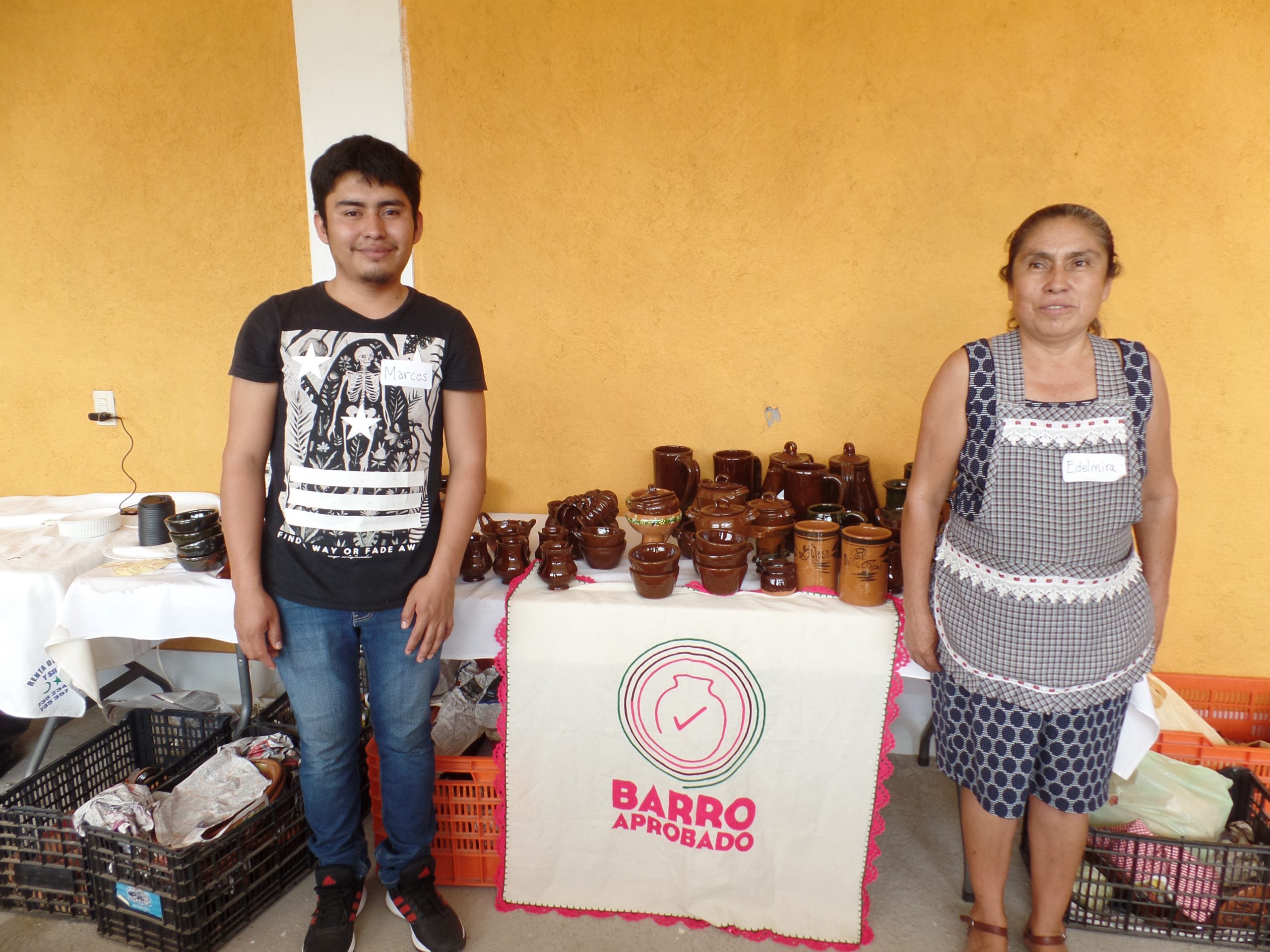 Mexican potters, who are part of Pure Earth’s Barro Aprobado project in Mexico, show off their lead-free wares.
Mexican potters, who are part of Pure Earth’s Barro Aprobado project in Mexico, show off their lead-free wares.
In 2014, Pure Earth began the Barro Aprobado project to raise awareness about lead contamination in Mexico, and provide Mexican potters with a lead-free alternative that is as healthy, vibrant and affordable as its toxic counterpart.
Pure Earth experts immediately realized that what they were doing in Mexico could be applied to Maragogipinho. It would be the perfect way to help eliminate lead contamination, preserve tradition and build solidarity.
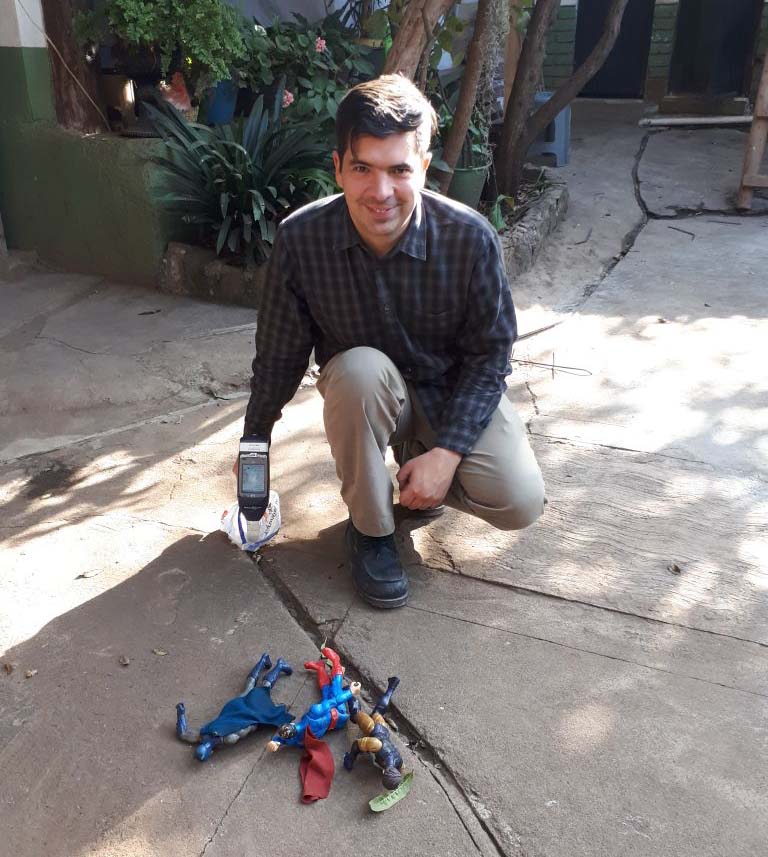
Daniel Estrada, Pure Earth’s regional director for Mexico, uses an XRF (X-ray fluorescence) analyzer to test a yard in Michoacán, Mexico, for lead. The house is located in a community of potters.
Sharing Solutions
“Pollution problems the world over sometimes share similarities,” says Daniel Estrada, director of Pure Earth’s Barro Aprobado project in Mexico.
“So solutions we develop to clean up contamination in one community can often be replicated in another with some adjustments. And that is what we did in this case. We brought our solutions from Mexico to Brazil.”
 Professor Antonio Menezes from the Federal University of Bahia speaks with a potter.
Professor Antonio Menezes from the Federal University of Bahia speaks with a potter.
In May 2018, Pure Earth brought Víctor Águila, a Mexican potter and director of the NGO Barro Sin Plomo, to Maragogipinho to teach the first lead-free workshop using traditional kilns. The workshop was organized by Antonio Menezes, a professor at the Federal University of Bahia, and his students, who will be doing follow up work with the community.
The workshop was held in the studio of Nivaldo Dos Santos, a local artisan who wants to see Maragogipinho go lead-free. About nine Maragogipinho potters made the commitment to the four-day workshop.
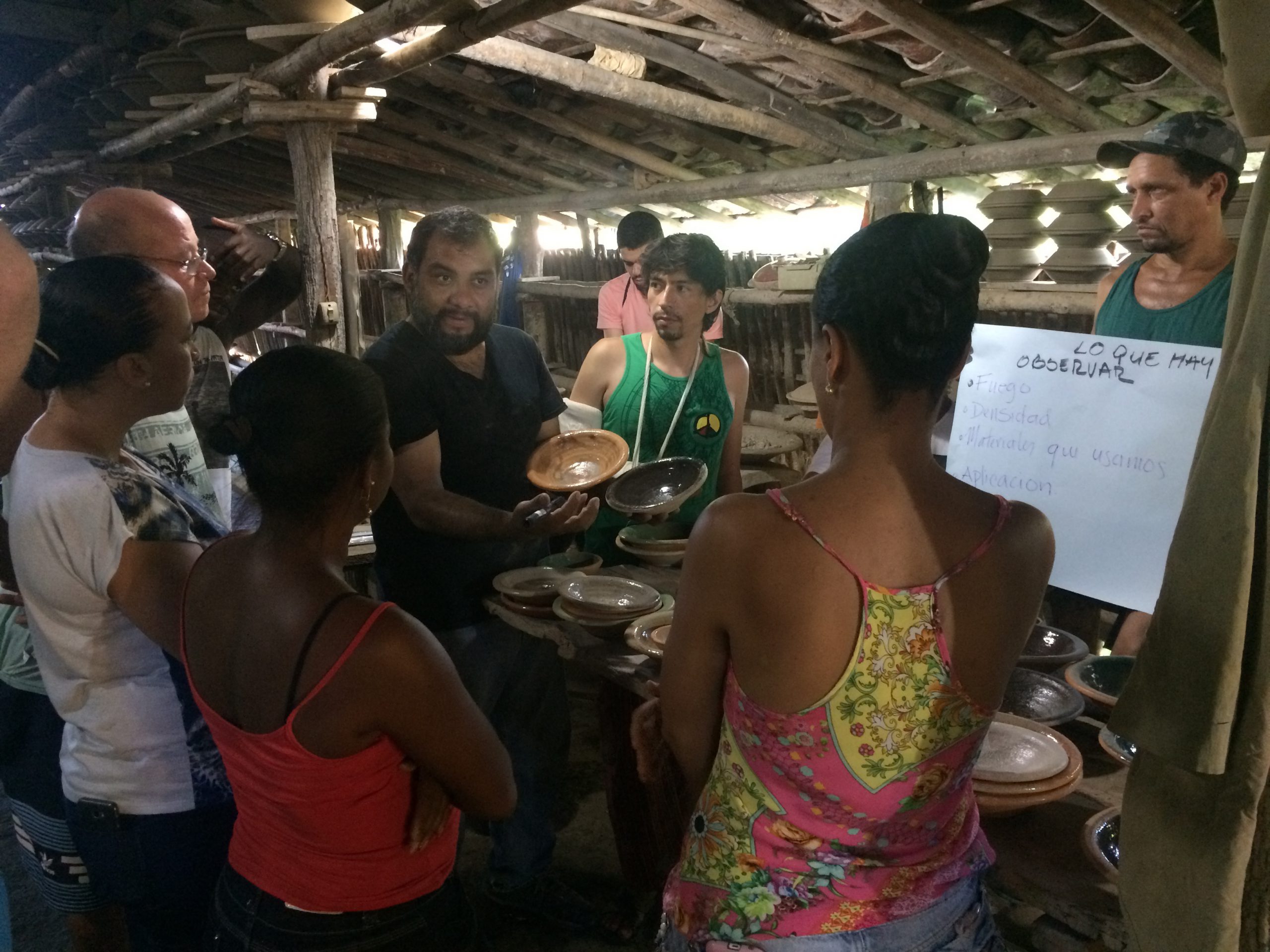 Víctor Águila, a Mexican potter, showing his Brazilian counterparts pottery created using lead-free glaze with a traditional kiln. Local artisan Nivaldo Dos Santos (in glasses) looks on.
Víctor Águila, a Mexican potter, showing his Brazilian counterparts pottery created using lead-free glaze with a traditional kiln. Local artisan Nivaldo Dos Santos (in glasses) looks on.
At first, the local artisans were skeptical that a glaze could be made in their low temperature kilns without using lead. However, after Víctor taught them to concoct a lead-free glaze combining calcium carbonate, ground glass and clay, they became more enthusiastic and encouraged.
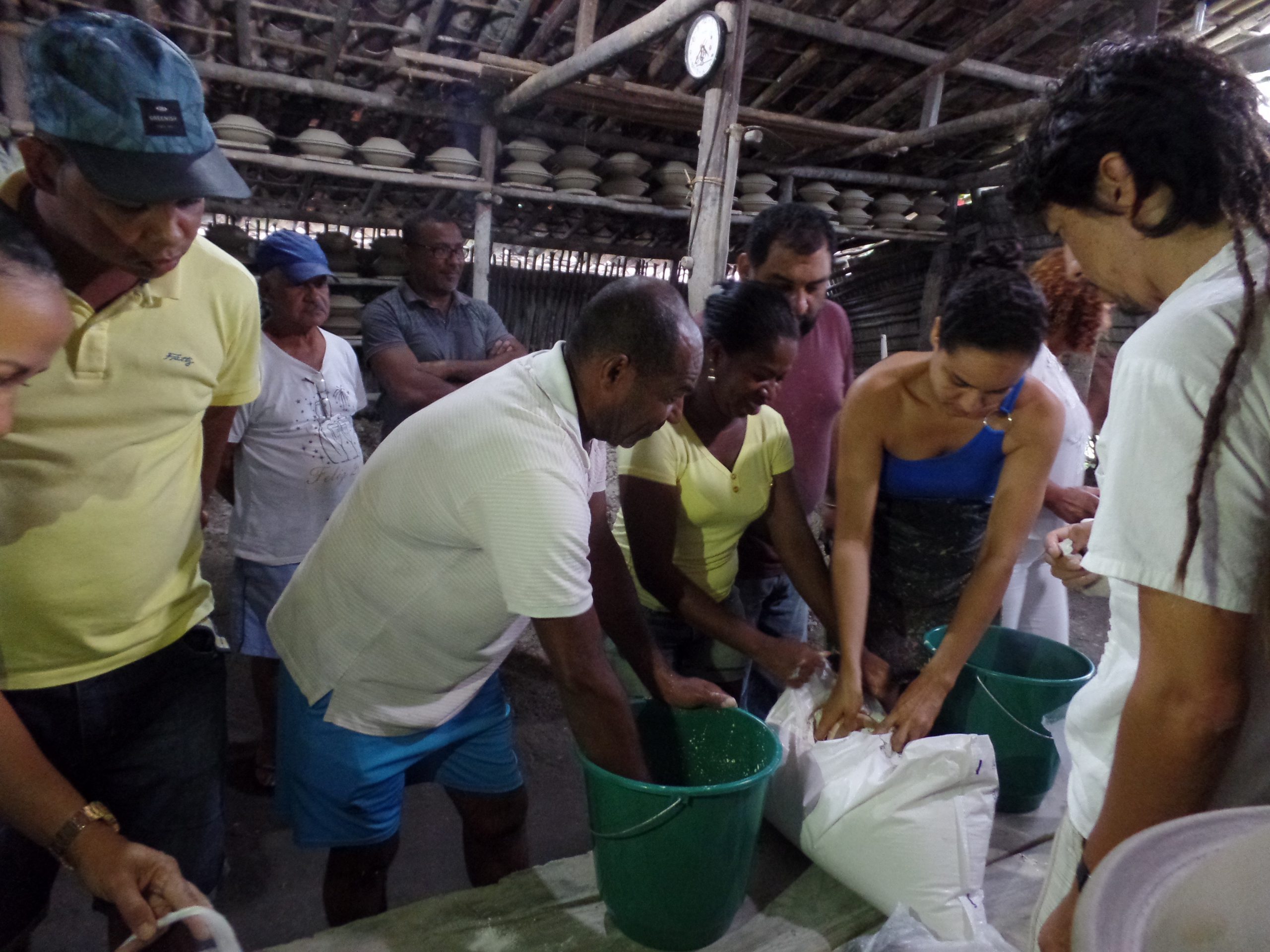 Mixing the lead-free glaze.
Mixing the lead-free glaze.
At the end of the workshop, participants created a Whatsapp group to share their experiences and help one another find a local formula for lead-free glaze that will work for them.
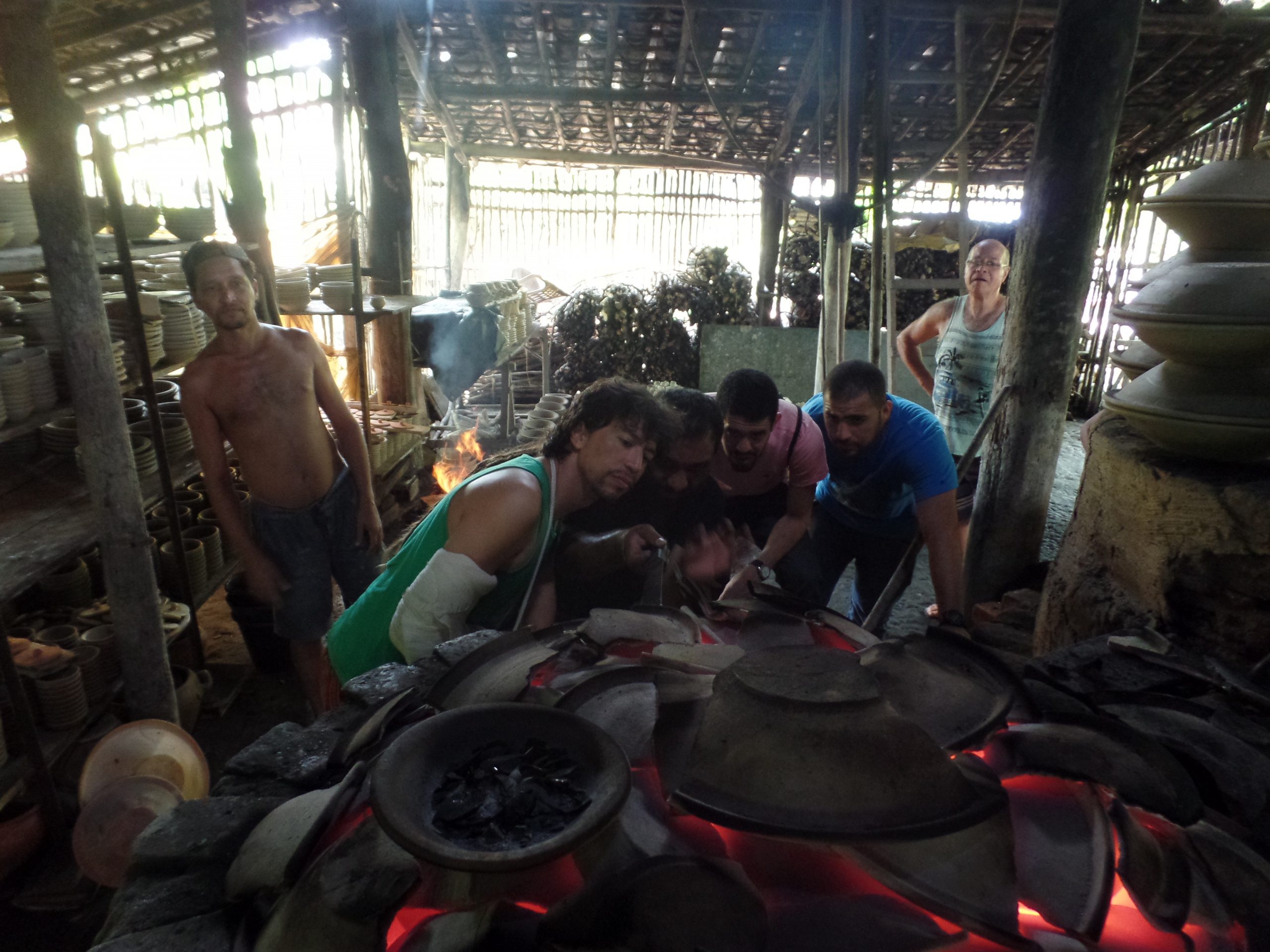 Potters carefully checking the color of the glaze to determine if it is ready.
Potters carefully checking the color of the glaze to determine if it is ready.
Building Solidarity
The workshop was a big step towards changing the attitudes of Maragogipinho’s artisans. The potters left the workshop feeling a sense of solidarity. They now know that they are not alone, and that a solution is at hand.
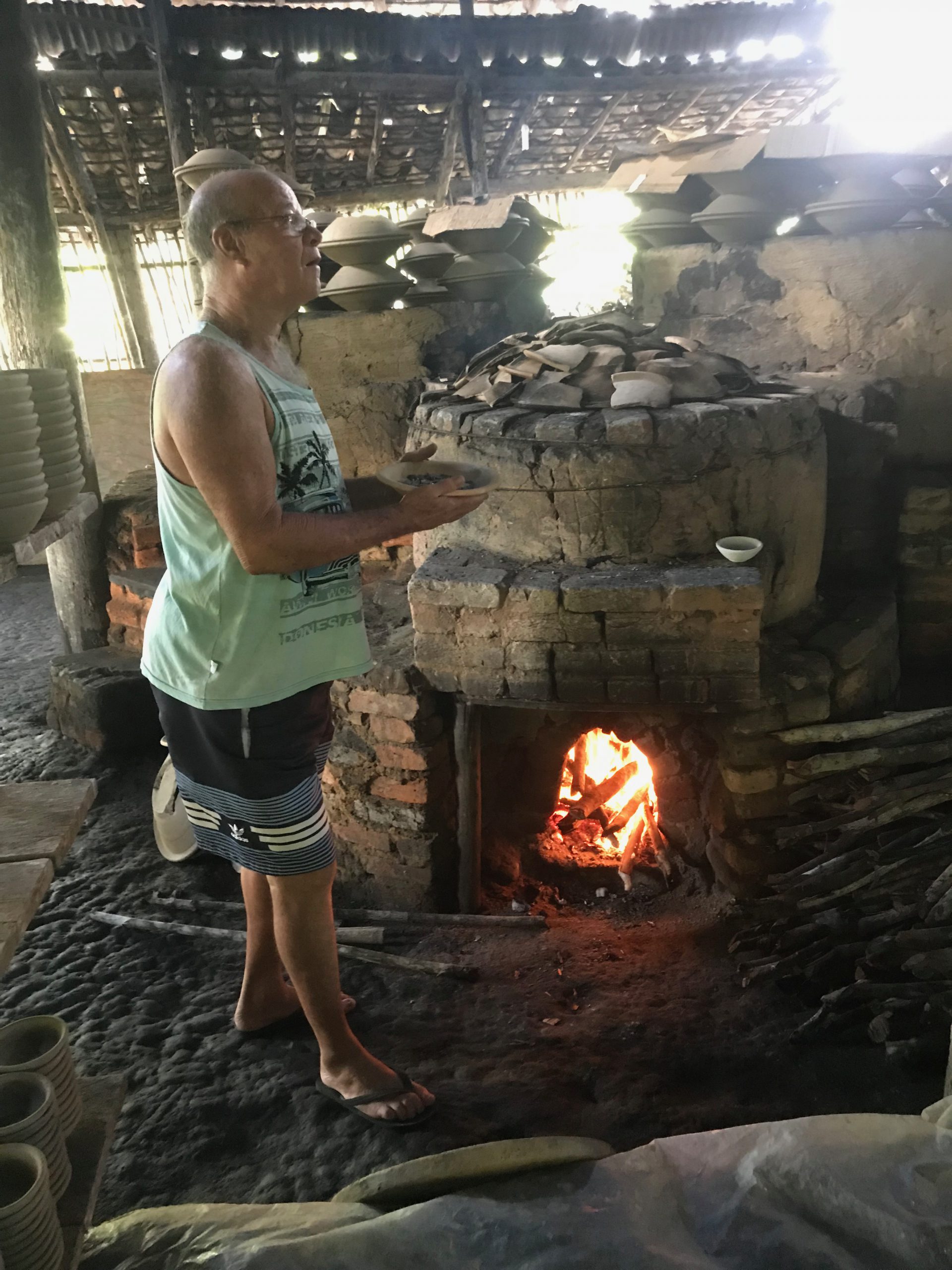 Local potter Nivaldo Dos Santos in his workshop.
Local potter Nivaldo Dos Santos in his workshop.
Local government officials along with professor Antonio Menezes and his students joined in the conversation, meeting potters and the Pure Earth team to discuss solutions. As a result, officials are planning to purchase one ton of lead-free glaze for the potters to use while the artisans work on refining their own local version.
Together, the community is now determined to go lead free. But they need more support. Contaminated workshops must be remediated so artisans and their families do not continue to suffer from lead poisoning, and more potters need to learn about the lead-free solution.
Taking these crucial steps will enable artisans to preserve their livelihood while keeping the Maragogipinho community free from lead poisoning.
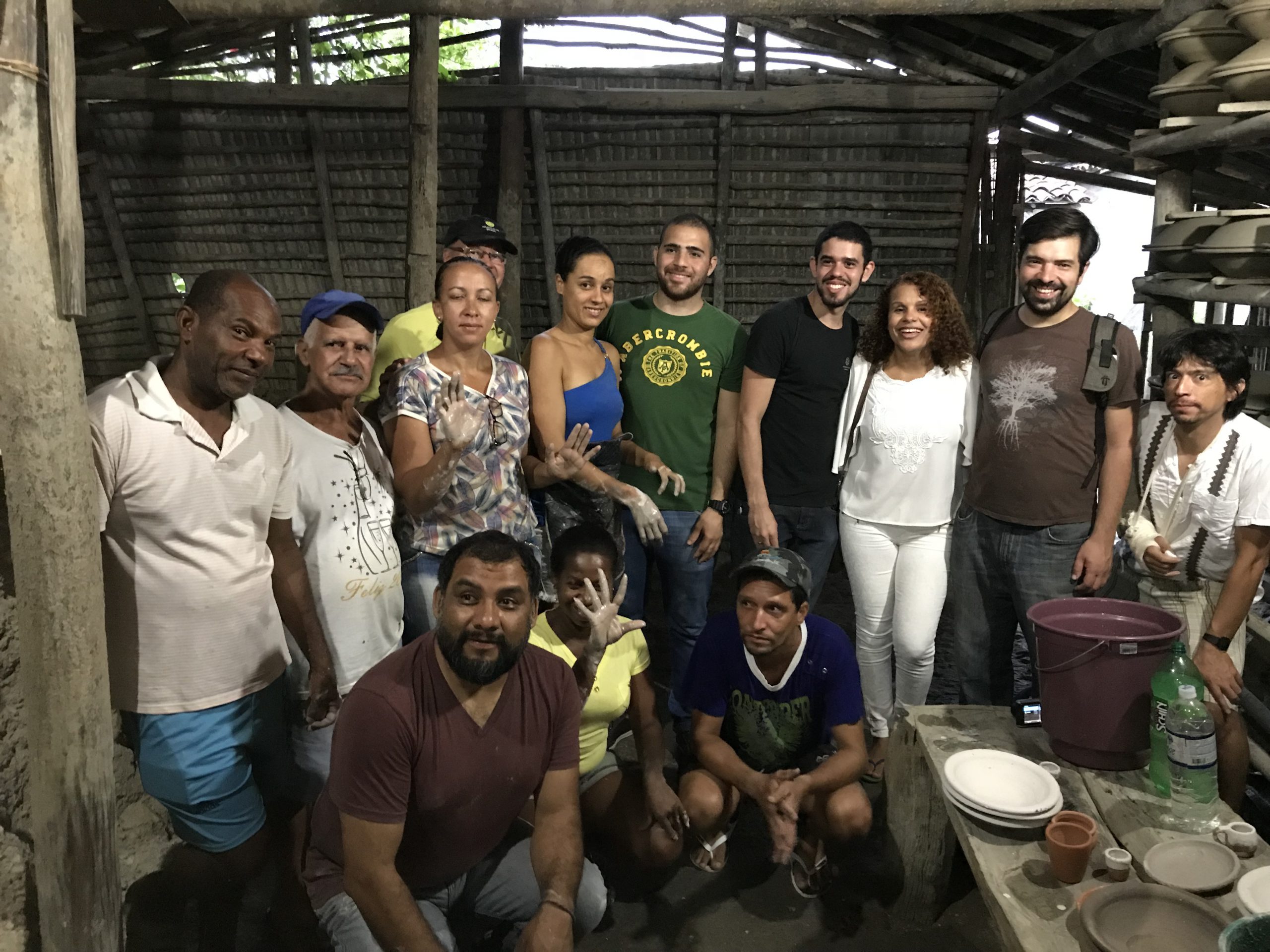
Thanks to Pure Earth friend Caterina Heil who provided generous support for this training in Brazil.



